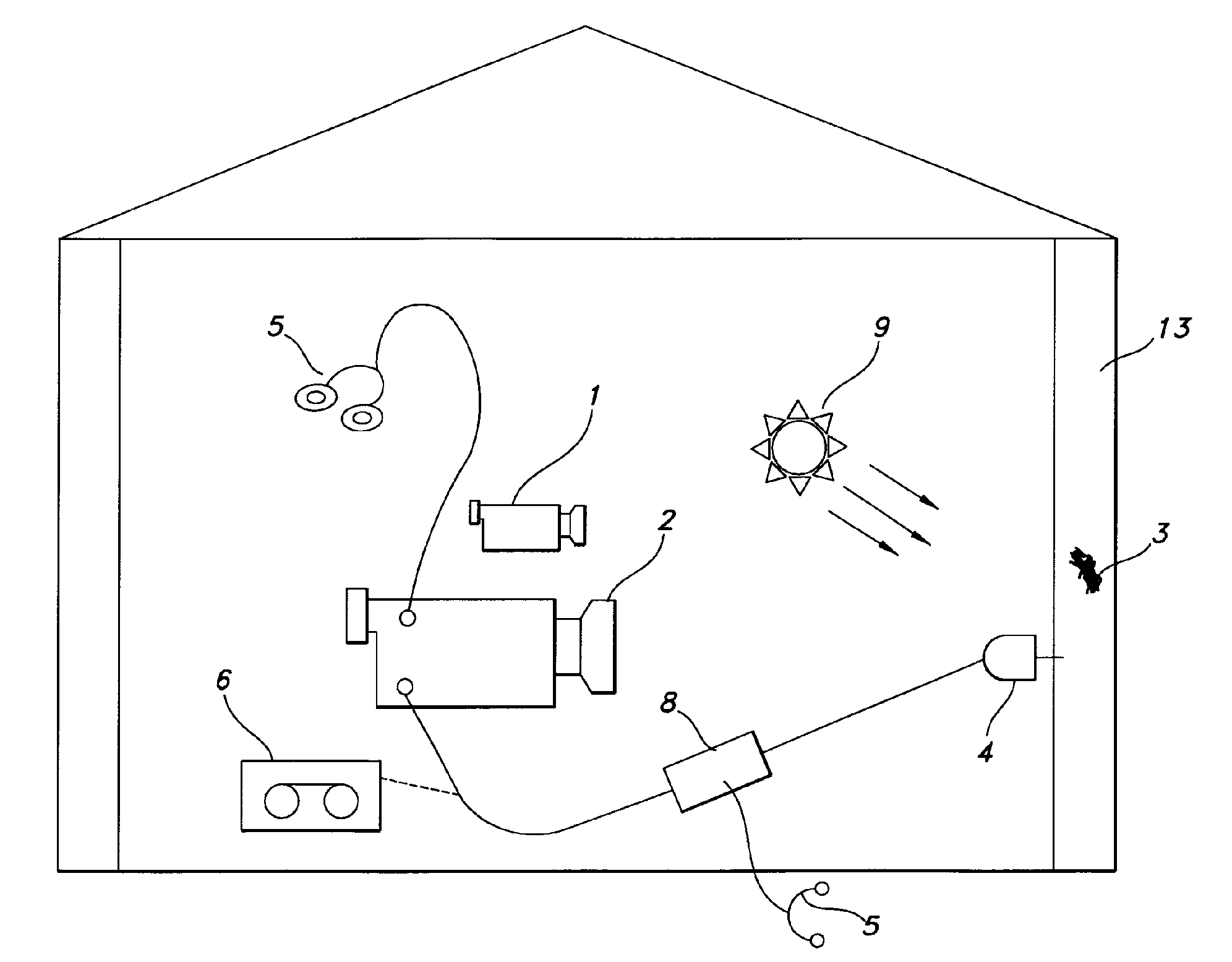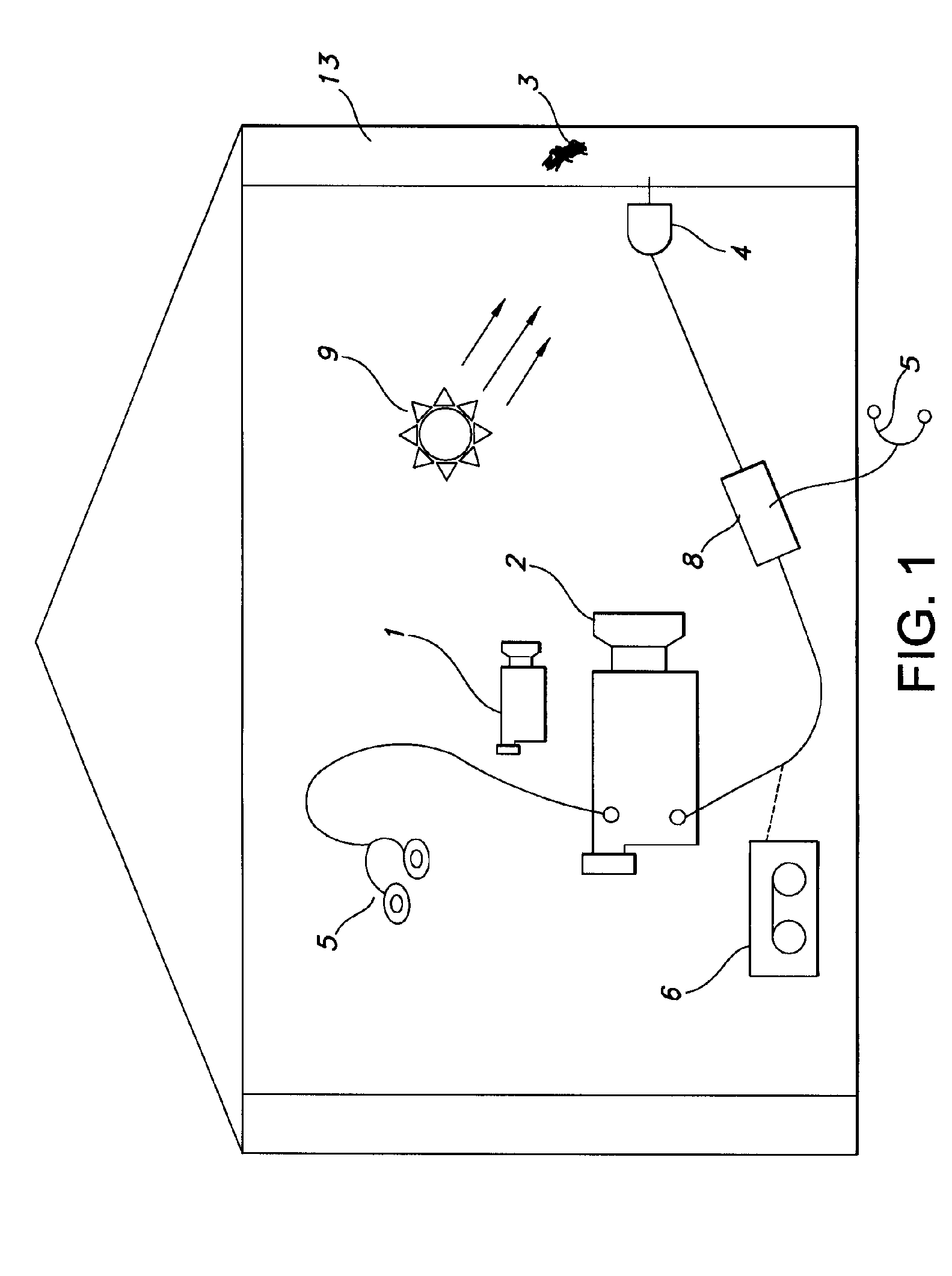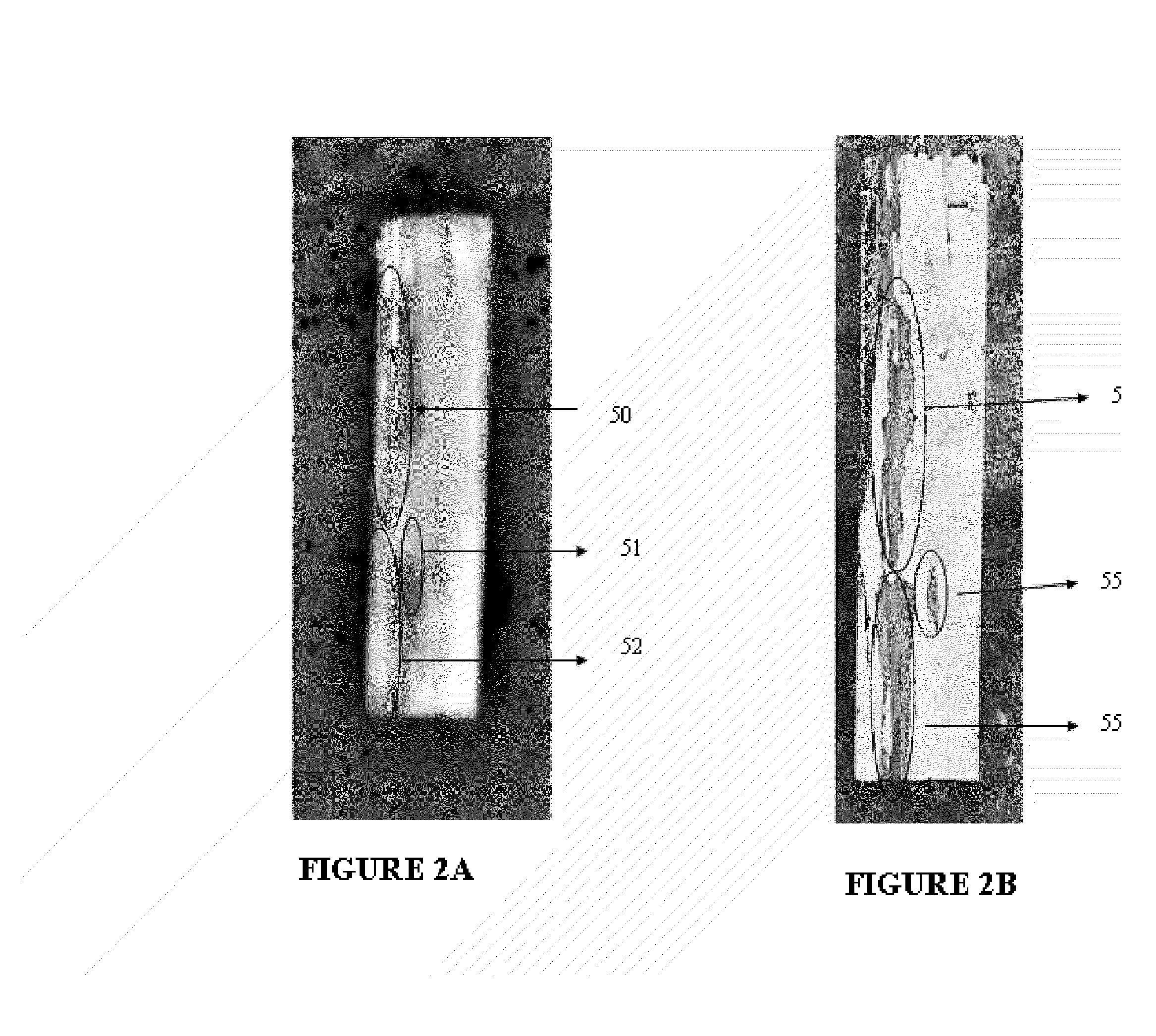Method to detect termite infestation in a structure
a technology of non-destructive detection and structure, applied in the direction of material flaw investigation, optical radiation measurement, instruments, etc., can solve the problems of difficult to put a dollar amount estimate on termite damage, house is very susceptible to termite attack, and the infestation is extremely destructive to wood materials, etc., to achieve less specific or accurate detection, efficient screening, and large area
- Summary
- Abstract
- Description
- Claims
- Application Information
AI Technical Summary
Benefits of technology
Problems solved by technology
Method used
Image
Examples
Embodiment Construction
[0028]As schematically depicted in FIG. 1, a preferred embodiment of the apparatus and method of the present invention includes a thermal imaging camera 1 for performing a preliminary scan of a structure 13 in order to locate potential termite infestations sites 3. A thermal imaging camera 1 is used to perform an infrared scan. The structure 13 can be a wooden object, such as a wall stud, paneling or in one embodiment a live tree. Termite infestation sites 3 can be the result of subterranean termite or dry-wood termite activity. In the case of a subterranean termite infestation, the moisture brought in by the subterranean termites will show up as a “suspicious cold or hot spot” in a thermal imaging scan. In the case of a dry-wood termite infestation, a heat or cold source 9 is needed to increase or decrease the temperature of a targeted structure 13. This heat source 9 can be an electric, gas or oil heat source as well as an incandescent or infrared light source. The areas in the ta...
PUM
| Property | Measurement | Unit |
|---|---|---|
| frequencies | aaaaa | aaaaa |
| frequencies | aaaaa | aaaaa |
| thermal imaging camera | aaaaa | aaaaa |
Abstract
Description
Claims
Application Information
 Login to View More
Login to View More - R&D
- Intellectual Property
- Life Sciences
- Materials
- Tech Scout
- Unparalleled Data Quality
- Higher Quality Content
- 60% Fewer Hallucinations
Browse by: Latest US Patents, China's latest patents, Technical Efficacy Thesaurus, Application Domain, Technology Topic, Popular Technical Reports.
© 2025 PatSnap. All rights reserved.Legal|Privacy policy|Modern Slavery Act Transparency Statement|Sitemap|About US| Contact US: help@patsnap.com



